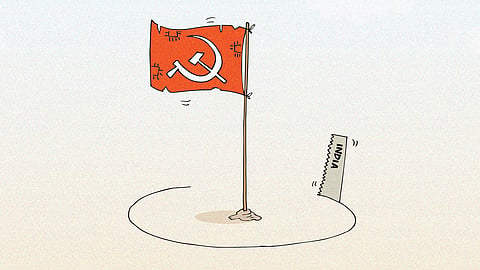Bangladesh’s flawed transitional justice – Southasia Weekly #68
This week in Himal
There’s just one day left for you to sign up as a paying supporter as part of our 38 Patrons for 38 Years campaign! We’ve hit our initial target, and now we’d like to get well over 60 supporters before the month is out. So this is your last chance to join our Patron programme and receive Himal’s Right Side-Up Map as a special thank you.
This week, Cyrus Naji writes that Bangladesh’s interim government risks continuing the abuses of the Sheikh Hasina regime in its efforts at transitional justice.
Don’t miss Jamaima Afridi’s article on Pakistan’s targeting of Baloch women leaders leading protests against disappearances and calling for equal participation in the Baloch struggle as part of a widening crackdown.
For the next episode of the Southasia Review of Books podcast, host Shwetha Srikanthan speaks with fiction writer and translator Aruni Kashyap on his short story collection, “The Way You Want to Be Loved” which tells stories of queer love and desire amidst state-sanctioned violence in India’s Northeast.
This week in Southasia
India's brutal crackdown on Maoists
In a significant escalation of India's long-standing conflict with Maoists, a fierce gunfight on 28 May led to the killing of Communist Party of India (Maoist) general secretary Nambala Keshav Rao, alias Basavaraju along with 24 others, reportedly members of Basavaraju’s personal protection detail. The deaths underscores the Indian government's "warzone" approach to eradicating the decades-old insurgency.
The Maoist movement was officially formed in 1969, adopting its current name in 2004 with the merger of key Marxist-Leninist groups into the CPI (Maoist). Critics argue that India’s brutal crackdown disproportionately affects Adivasis caught between the state and the Maoists. More than 11,000 civilians and security forces have been killed in clashes involving Maoist fighters between 2000 and 2024, according to official figures. Security forces have killed at least 6,160 Maoist fighters during the same period, according to police and Maoist figures. The emphasis on eliminating Maoist cadres, rather than addressing the root causes of the insurgency – land displacement, poverty, and lack of development – perpetuates a cycle of violence. And the impact of these operations on local populations has been devastating, with civilians facing displacement, intimidation, and the constant threat of violence. Even as India escalates its brutal crackdown, the Maoists are also seeing waning support, with supporters saying they remain unable to build a cohesive political force and are unable to adapt to changing times.
From 2010, C K Lal writes that the Indian media is treating the conflict between Maoists and militarists as if it were a contest for market share between two competing cola brands. The Adivasis who die in armed encounters and the police officers who lose their lives during ambushes evoke little sympathy.
From the archive (May 2010)

